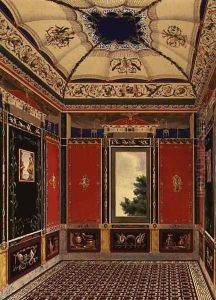Ludwig Gruner Paintings
Ludwig Gruner was a German artist, engraver, and art historian, born in 1801 in Dresden, Saxony. His full name was Friedrich Ludwig Georg Gruner, and he is most renowned for his contributions to the world of engraving and his role as an art advisor. Gruner's work and expertise were highly sought after, particularly in the realm of decorative arts and the reproduction of famous artworks through engraving, a field in which he excelled due to his meticulous attention to detail and his deep understanding of art history.
Gruner received his initial artistic training at the Dresden Academy of Fine Arts, where he honed his skills in engraving under the tutelage of accomplished masters. His talent and dedication quickly set him apart, leading to recognition and opportunities to work on various prestigious projects both in Germany and abroad. One of Gruner's most significant contributions was to the field of mural painting and decorative arts, where he played a crucial role in the revival of fresco painting in the 19th century. He was instrumental in the decoration of several notable buildings, including the Royal Pavilion at Buckingham Palace, where he worked under the commission of Queen Victoria.
In addition to his practical work, Gruner was deeply involved in the academic side of art. He published several influential books and essays on art history, theory, and the techniques of engraving, which were widely read and respected among his contemporaries. His publications often focused on the Italian Renaissance, a period of particular interest to him, and he was responsible for introducing many European artists and collectors to the works of the Italian masters through his engraved reproductions.
Ludwig Gruner's legacy is not just in the artworks he created or the projects he directed but also in his influence on the appreciation and understanding of art in the 19th century. His efforts to bridge the gap between historical art techniques and contemporary practices helped pave the way for modern art movements. Gruner passed away in 1882 in Dresden, leaving behind a rich body of work that continues to be studied and admired by art historians and enthusiasts alike.
